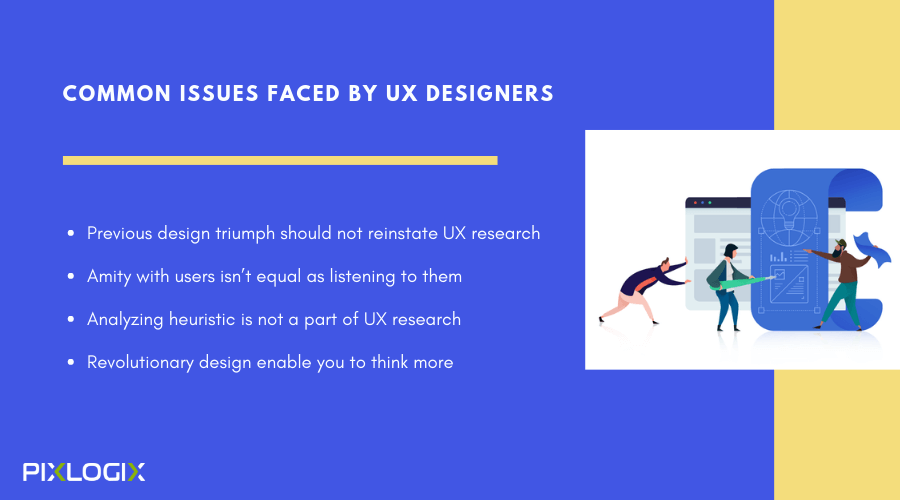Have you ever come across a website or mobile app that is mind blowing? Did you feel like appreciating the interface of app or website? Well, you attain efficiency and elegance in your website or mobile app if you put your maximum efforts in UI UX Web Design ! UX stands for User experience that can take a toll on your mobile app or website if not executed properly.
This is the major problem-saving technique in every app or web development process. If you’re business lack data, UX designers are enforced to rely on intuition and experience. What are consequences of such enforcement? Well, when intuitive and experience is undoubtedly assets, but it can lead to a dodgy assumption: Designer knows everything!
Unfortunately, nothing can be accomplished with the right data and facts in hand, and if you’re designing UX in app, it is not a UX without data. And in this highly competitive market, user experience is the primary concern and everything falls in the secondary category.
Though you Hire UX Designers team but everything doesn’t prefer assumptions over real data insights for UX design.

Here in this article, common issues faced by UX designers without data and the right fix to resolve them:
Previous design triumph should not reinstate UX research:
If you want that your users should appreciate your creativity, logic, and determination for the UX design, then duplicating others feeling for solving complicated design will take you nowhere. Undoubtedly, your past success stories might help you prepare curate list of methods and tools required for future projects. This is a good way because forgetting what effective thing you used before sounds a bit foolish! However, this can be a pitfall as well when previous groundbreaking solutions unleashed one problem might not prove to be successful in the another scenario. And things become more complex when you don’t have relevant data for UX design.
Fix: Every problem in UX designing has a unique solution; therefore, it is important to evaluate both positives and negatives that you implemented for past design. We recommend you to focus on process not on the results. After analyzing both the aspects, you’ll come to a conclusion that will further help you articulate a robust UX research plan.
Amity with users isn’t equal as listening to them:
For instance, when you work in one industry for years understanding the needs of target audience is not a hassle for you and designing the same for them also become effortless. This type of amity or closeness with users is valuable for designers to forecast user’s needs and deliver truly delight product. But be mindful about this amity as it can be red flag towards generalization that proves to be fictitious and hamper user experience. Predicting customer behavior is quite challenging as it keep on changing and evolving with the Web Design UX trends.
Fix: Coalescent your prior knowledge of users with product field studies, testing, and interviews that will help you understand how users truly behave in an environment and also put light on culture influences, which is quite difficult understand. In addition to this, UX designers are responsible for designing buyer persona. This is one of the crucial steps in UX design that help to align strategy and goals to specific group of users and answer a very common question “ Who are we designing for?”
Analyzing heuristic is not a part of UX research:
Heuristics are usability principles that include standards, thumb and conventions, which are predefined and are always observed and tested over a period of time. In this process, experts discover usability concerns in digital products; rate their repercussions, enabling UX designers to learn about those issues and come up with a resolution. Though heuristic is vital, but it does not provide the required UX data critical for designing digital products. You will never get any feedback related to heuristic performance as they’re predetermined in every app or website.
Fix: If you move to heuristic evaluation without user research it provides you no results, so here are some better tactics:
- Designer should always begin their research to find the why’s of user behavior, so adopt qualitative research. Qualitative research is never in numeric form as it includes the feelings, preferences, etc., of the users that is obtained by interviews of users, field studies, and a lot more.
- When you’re ready with prototype of your design, use qualitative research to learn how people will interact with your product or services.
Revolutionary design enable you to think more:
We always think that UX process is not static so processes, outcomes, and tools are open for debate and it’s stimulating. So when it seems like every designer has accepted a standard method and then suddenly someone comes along with something groundbreaking ideas and make you think that you might have think out of the box. So revolutionary designers keep the designing field fresh, but it can also be taken out of context and forced on products.
Fix: Don’t just blindly any popular design idea, investigate and analyze whether it fits your product requirement or not. You can balance with the established principle and then use heuristics evaluation to update your product and test usability.
Key Takeaways
Well, it seems that data and research are solid rock for delivering seamless user experience to users. UX designers actually perform thankless roles which are intangible. If you’re looking for a creative UX Design Company, then you’re on the right landing spot. We at Pixlogix offer quality, reliable, and amazing UX design services to clients worldwide.
Request a free quote now: Request a Quote
